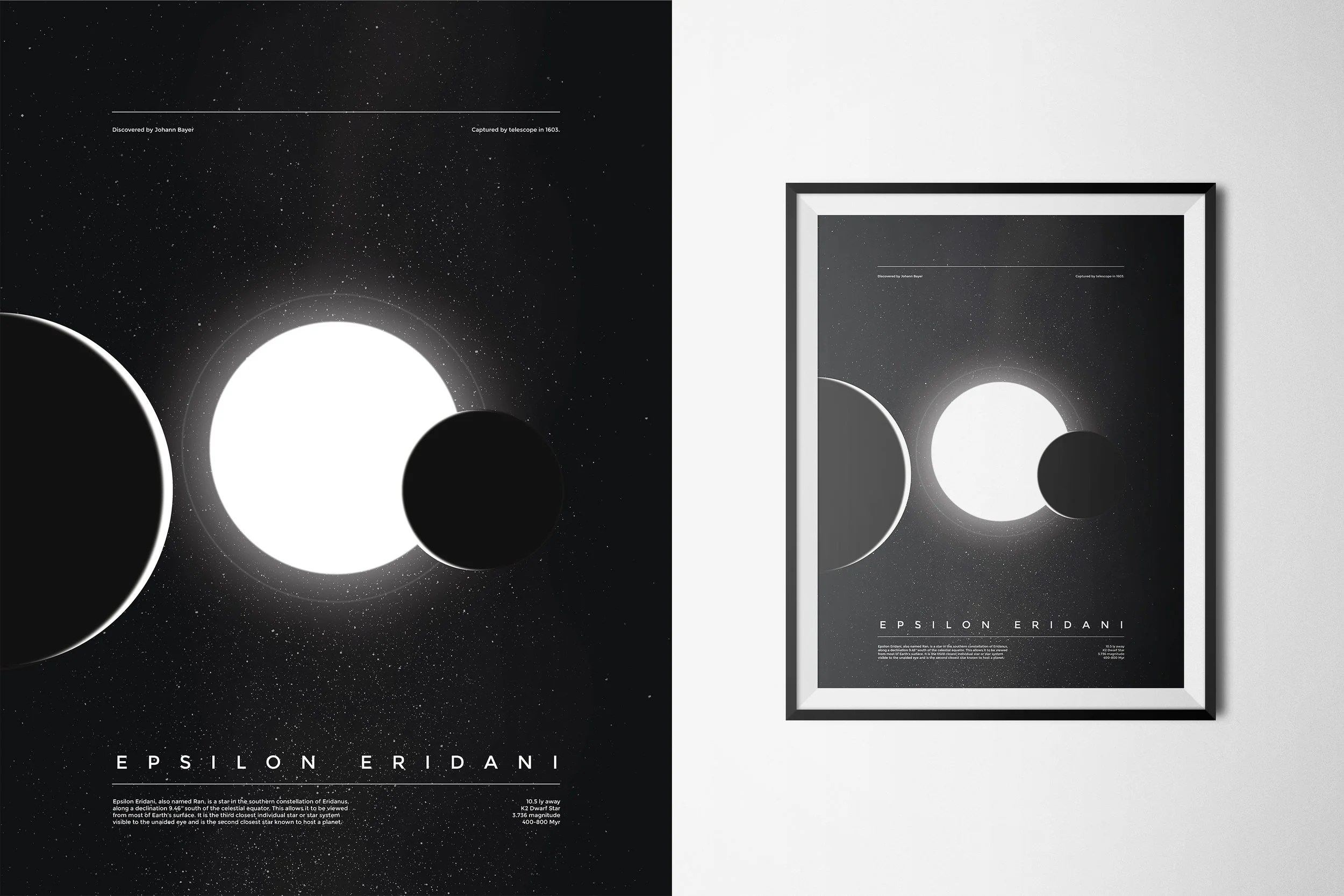SOLAR ANALOG SERIES
A poster project providing visual representations of celestial bodies in our known universe. Solar Analog is a term often used to describe stars that share similar characteristics as our native Sun.
1SWASP J140747
A star similar to the Sun located in the constellation of Centaurus at a distance of about 420 light years from Earth. A relatively young star, its age is estimated to be 16 million years, and its mass is about 90% that of the Sun's. The star's name come from the SuperWASP (Wide Angle Search for Planets) program.
EPSILON ERIDANI
Also named Ran, this star is in the southern constellation of Eridanus, along a declination 9.46° south of the celestial equator. This allows it to be viewed from most of Earth's surface. It is the third closest individual star or star system visible to the unaided eye and is the second closest star known to host a planet.
SN 1987A
A late supernova in the outskirts of the Tarantula Nebula in the Large Magellanic Cloud (a nearby dwarf galaxy). It occurred approximately 51.4 kiloparsecs from Earth, approximately 168,000 light-years, close enough that it was visible to the naked eye. It could be seen from the Southern Hemisphere. The light from the new supernova reached Earth on February 23, 1987.


